Not necessarily. It may be gold, may be brass plated with gold, anodized aluminum made to look like gold or it may be plastic coated with metal with gold like glitter. There are many possibilities.
Then what exactly is it?
This is a question which I will try to answer.
Most of us have some silver or gold or items looking like silver or gold in our households. It may be a medal, souvenir, plaque, statue, utensil or something else. We keep them on display or in a cupboard or may be in a safe place. Many a times we are happy to believe them to be made of Silver or Gold. As a matter of fact it is not the material value which is of importance to us, rather the memories or prestige associated with them. The fact that the gold medal you got in a competition or topping the university is far more important than its material value. Whereas ornaments, utensils, statues, coins certainly have their material values apart from the sentimental values.
As a curious being it is always interesting to ask “is it really gold?” Or is it silver or brass or iron or copper or bronze or aluminium or some alloy made to look like gold?
How do I find out what is it made off? It is possible to find the compositions of the metal by chemical means which is destructive or by X-ray fluorescence. But these are not easy methods to adopt as they are costly, requires infrastructure, can not be done at home. Many a times the articles may not be uniformly of one material but internally one metal and surface plated with a different material, like silver plated with gold or brass plated with silver. This makes the process to know precise composition little more difficult.
Can we do some examinations at home? The answer is yes. We can easily do some tests to at least rule out the article being made of gold or silver as claimed or only looking like gold or silver. I am interested in simple experiments using school level physics to grossly identify, rather to rule out the metal it appears to be. The experiments must be simple and possible with resources available at home.
Every material has a unique density which varies widely from one another. We can use the density to grossly know the possible material or rule out some. For example if a utensil is supposed to be of silver but actually is made up of brass and plated with a nice layer of silver, it is possible to positively confirm that its actually not silver and but possibly brass by measuring the density. The density of brass is about 8+ gram/cc whereas silver is 11.8 gram/cc, quite distinguishable. Again silver is the best conductor whereas brass is lesser conductor than silver. Simple experiments also can differentiate them. If copper is plated on steel apart from density magnetic property can differentiate them.
But our main thrust here is to measure density by simple means and use density to rule out the materials like gold and silver.
What is density? It is mass per unit volume. Therefore to measure density we have to find volume and mass of the object under study. It is easy to find mass of an object as most of us have one decent digital kitchen weighing machine with resolution of 1 gram. But what about the volume? For a simple geometrical shape it may be done by dimensional measurement but that too will be difficult to do accurately. For any little complex shape it will be very difficult and for irregular object next to impossible task.
So what is the solution?
All students of science are aware that when any object is immersed in a liquid it displaces liquid equal to its immersed volume and the immersed object experiences an upward buoyant force equal to weight of the displaced volume of the liquid, conversely the liquid experiences an equal and opposite downward force. So if we take a container filled with water and place on a weighing scale to display its weight and then if we fully immerse an object hanging on a thread in the water without touching the walls and bottom of the container, the weighing scale will show increase in the weight equivalent to the weight of the volume of the water displaced. This increase in weight is equivalent the buoyancy. Divided by the density of the liquid, which in case of water is 1 gram per cubic centimeter, this increment in weight in gram numerically will give volume of the immersed object in cubic centimeter. If we drop the object totally in the container, the increase in the weight will be equal to weight of the object. Now object weight divided by object volume will give the density of the material of the object. This is subjected to the condition that the object is free of hollow spaces and no trapped air when immersed in water.
Once we know the density, by comparing the actual density of the article with the expected density we can easily draw our conclusion about the material of construction. For example medal of pure silver should have a density of 10.49 gram/cc, but if it’s actual density is about 8.4 to 8.7 gram/cc, we can easily rule out it being made of silver and safely conclude it to be made of brass plated with silver as the brass has a density 8.4 to 8.7 gram/cc. It is very common practice to make medals, statues, mementos, utensils, plaques, jewelries to be made out of brass and then plated with silver or gold to look like them at a very little cost.
We will do some demonstration to check some real life items around us whether they are made up of silver, gold or the material they are claimed to made up of.
I took one glass beaker of 2 liter capacity and filled it tap water sufficiently to immerse a silver utensil under test at the same time having enough empty space so as to avoid spilling of water when the article is immersed in it. The beaker is then placed on a digital weighing scale of 1 gram resolution or better. Once the reading stabilized the scale was tared i.e. zeroed.
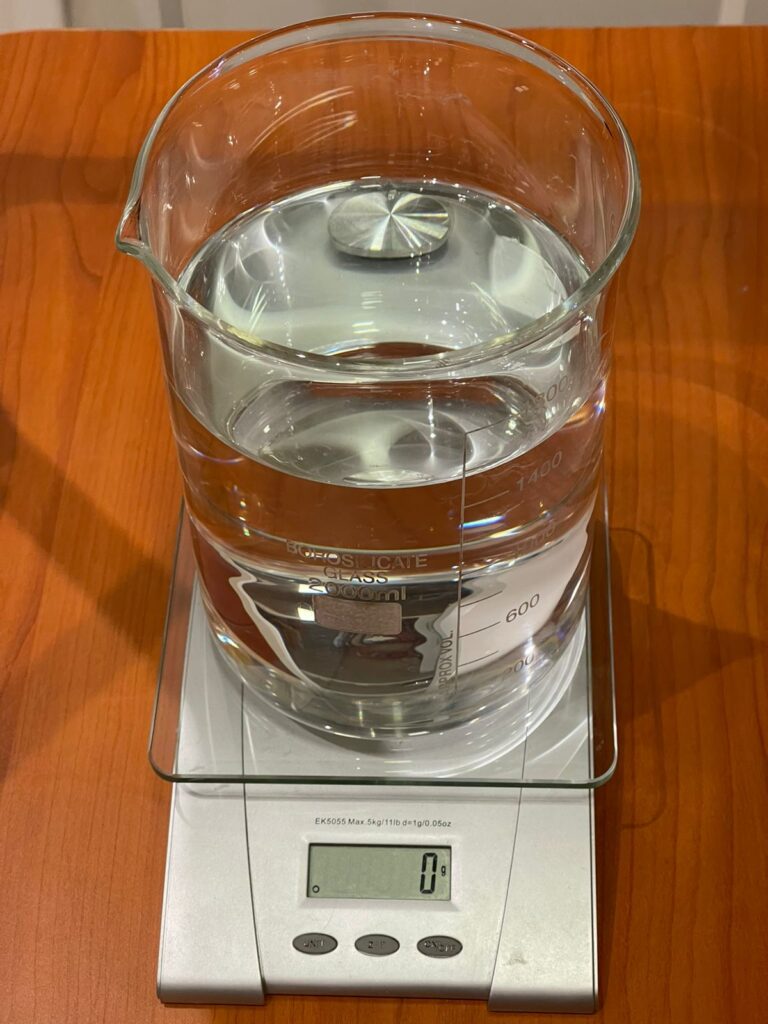
I then fully immersed the article hung with thread in the water without touching the walls of the beaker, while ensuring no air remained trapped inside. Once reading stabilized the reading was noted and it was 12 gram. The article was then dropped inside the beaker and the weight was noted to be 124 gram. This means the article has a volume of 12 cc. The density worked out to be 10.33 gram/cc, which is pretty close to the density of pure silver which is 10.49 gram/cc. So we are assured that the metal was silver only, alloyed with some other metal for workability and certainly not brass plated with silver.
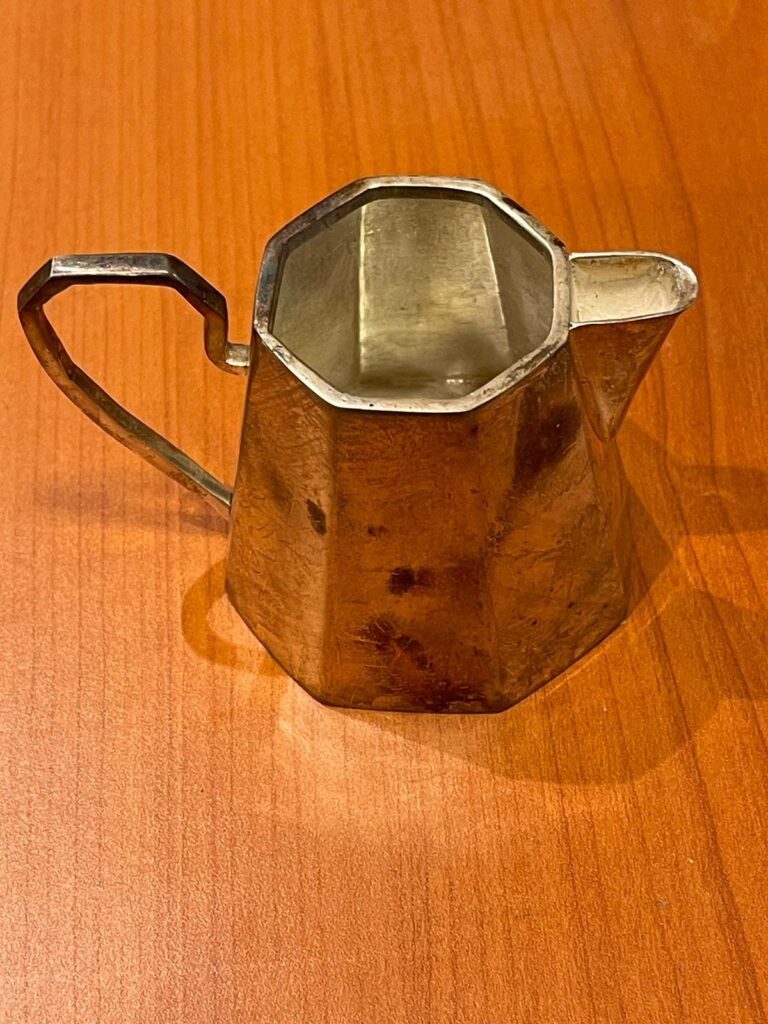
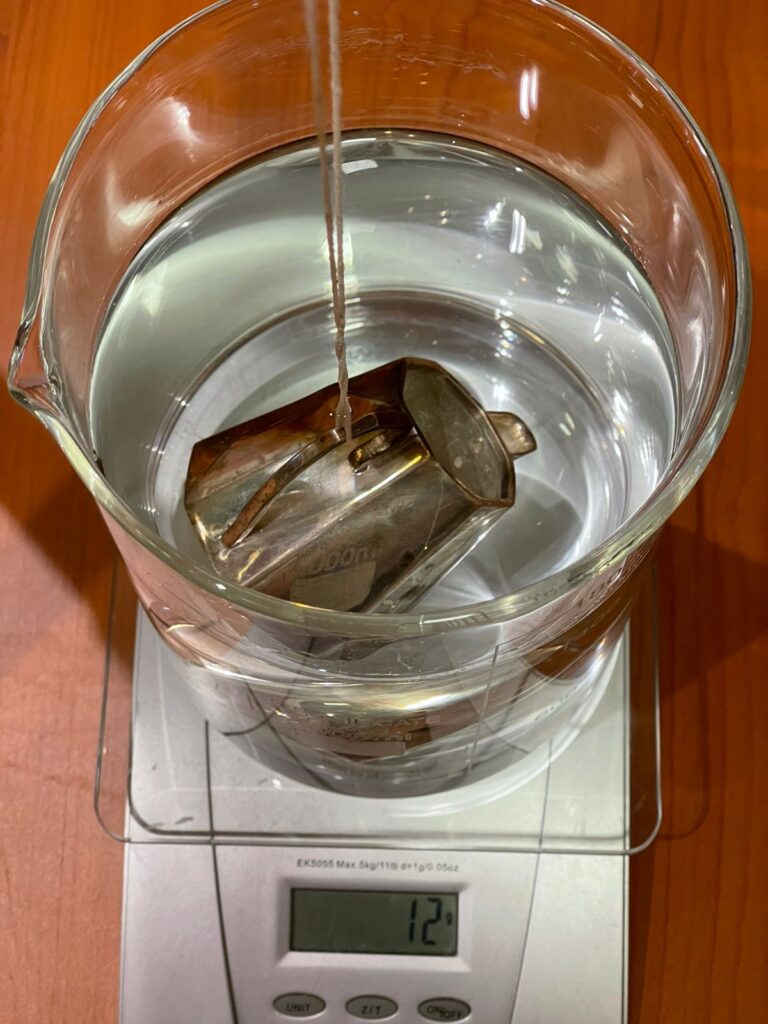
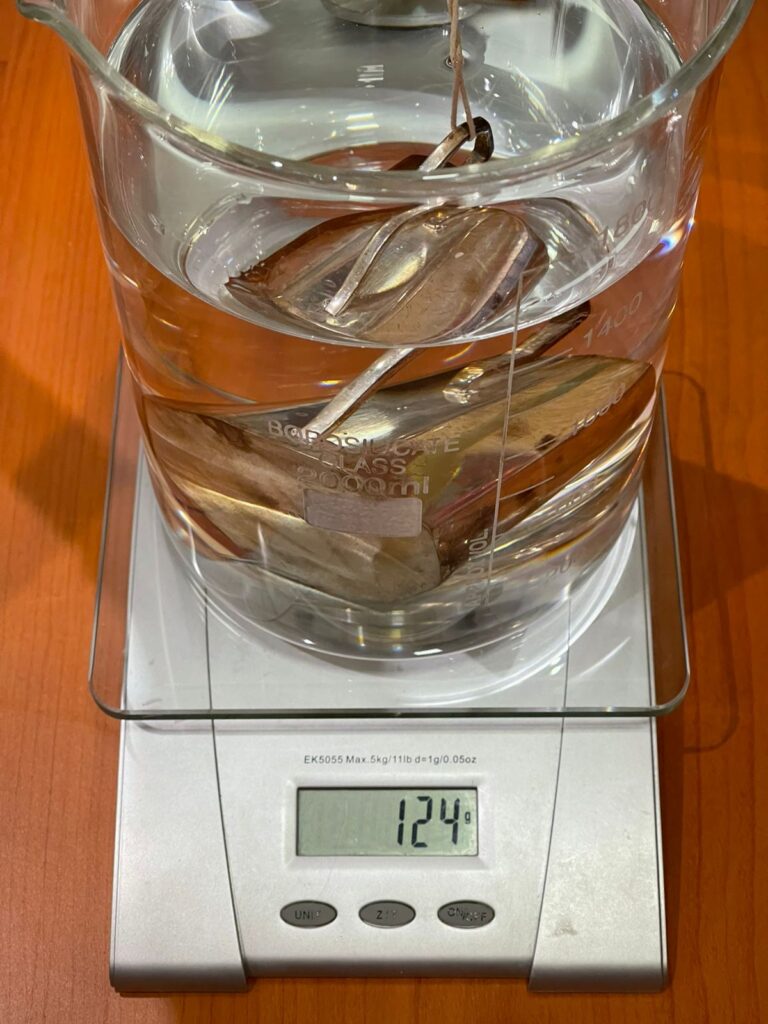
Over and above density measurement, we can think of checking some more properties. We know silver is non-magnetic, so it does not get attracted or repelled by magnet. But silver being a good conductor, if we keep moving a magnet close to it, we will see interaction between them as repulsion. It is because of eddy current developing in the silver due to variable magnetic field which it turn produce magnetic field repelling the magnet. The test was done by freely hanging the silver article by a thread and moving a magnet close to it and the result was found positive. So I concluded that the article was not an imitation silver article, but genuine silver article.
Next object was a gold medal. By the same method the volume was found to be 21 cc and weight was found to be 183 gram. The density worked out to be 8.71 gram/cc. This density is less than half of density of gold. Pure gold has a density of 19.3 gram/cc, 22carat gold has density of 15.6 gram/cc and 14 carat gold has density of 12.9 to 14.6 gram/cc, all of which are far more dense than 8.7 gram/cc. In fact Brass has a density 8.4 to 8.7 gram/cc. We conclude that the “gold” medal is not made of gold, but possibly brass plated with gold. This is the usual practice as cost of gold is too high. According to Wikipedia Olympic gold medals are made of 92.5% silver and plated with gold, having gold content at least 6 gram and Nobel Prize medals are made of 22 carat gold, plated with 24 carat gold.
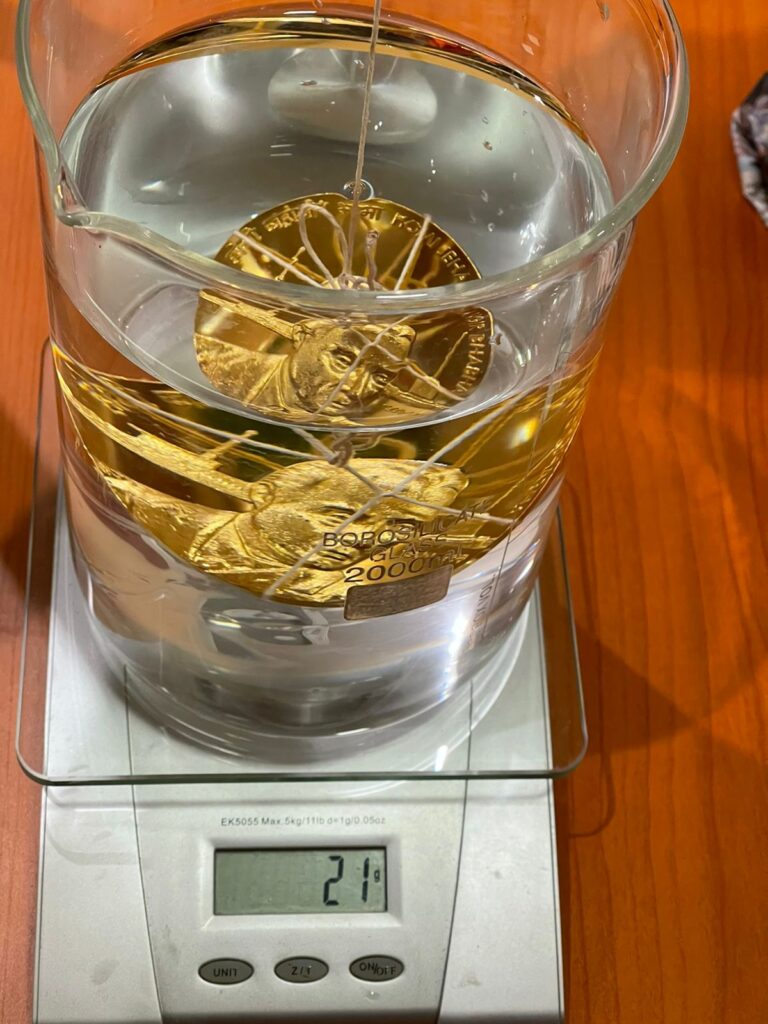
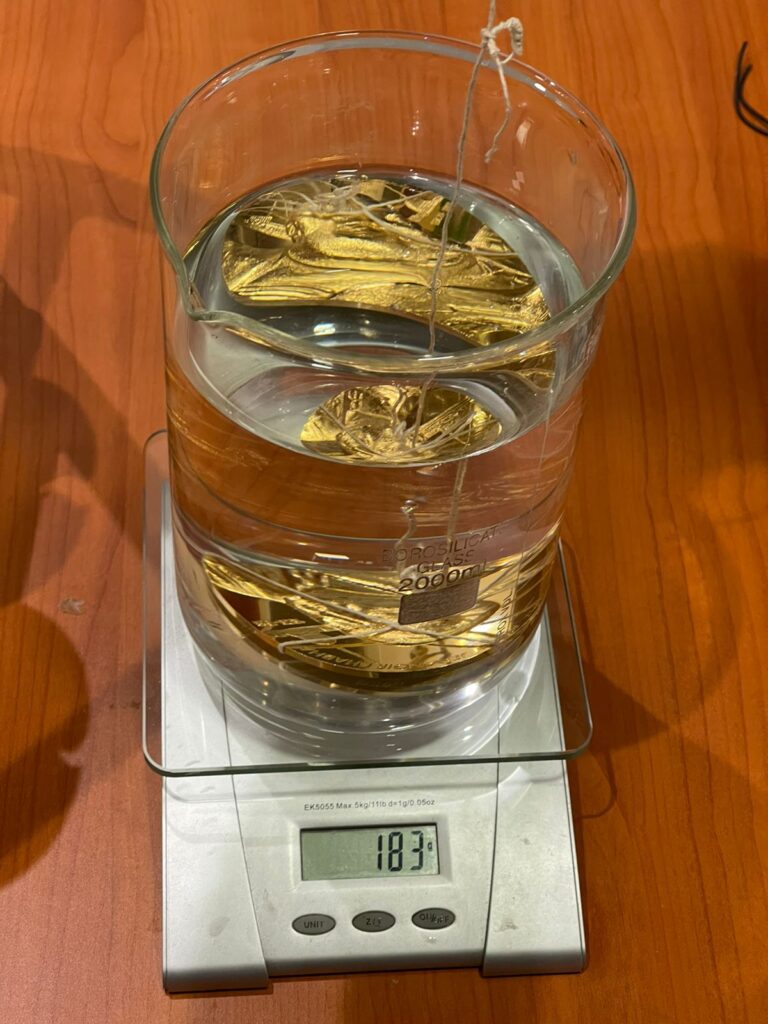
Next object was a prestigious silver medal. What was the result? Volume was found to be 21 cc and the weight was 215 gram. The resultant density was calculated to be 10.23 gram/cc. This is pretty close to pure silver density of 10.49 gram/cc. A test with fixed magnet shows non-magnetic property but with moving magnet it shows repulsive interaction indicating high electrical conductivity. So we can with fair amount of confidence say that it is made of silver. However it is not conclusive, for that we need to do chemical assay or x-ray fluorescence test.
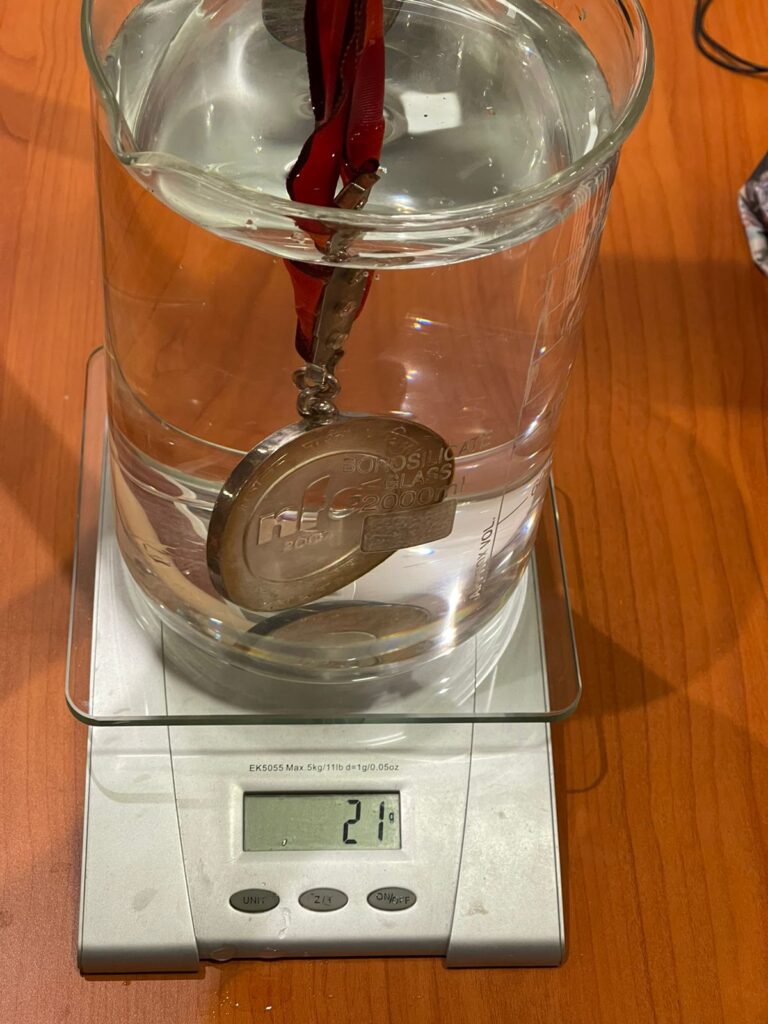
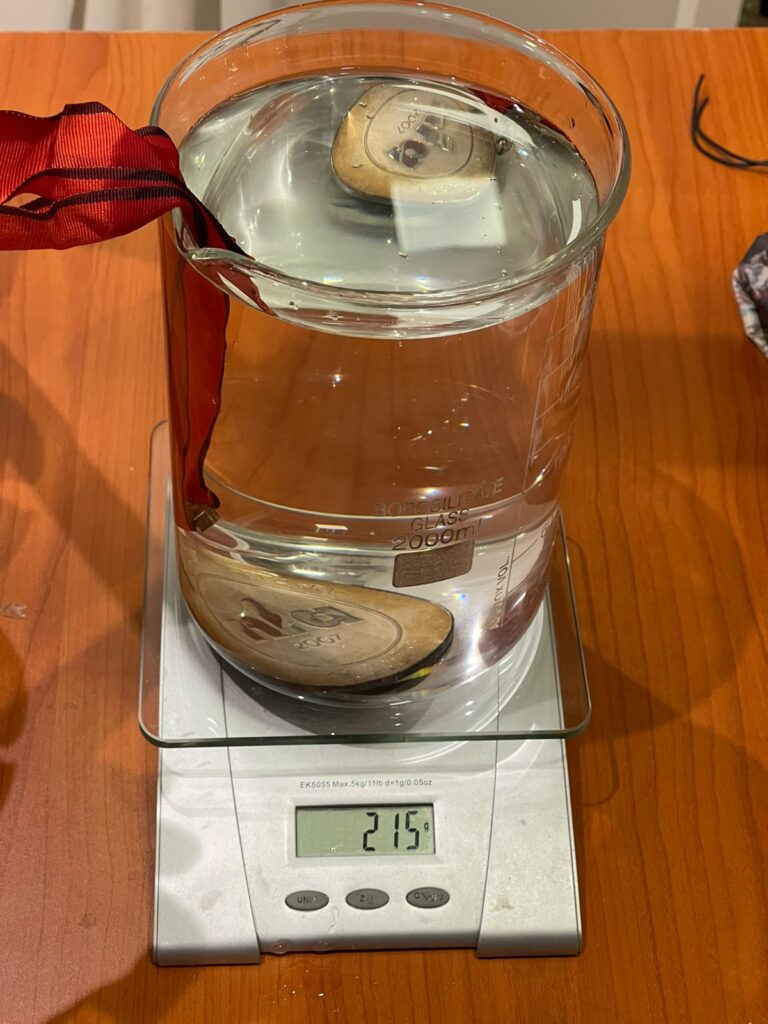
Recently I bought a copper rod online from amazon. Thought why not I try this method to check whether the rod was something other than copper. Density turned out to be 383/43=8.91 gram/cc, which same as the density of pure copper 8.96 gram/cc. I also conducted moving magnet test it interacted repulsively indicating high conductivity.
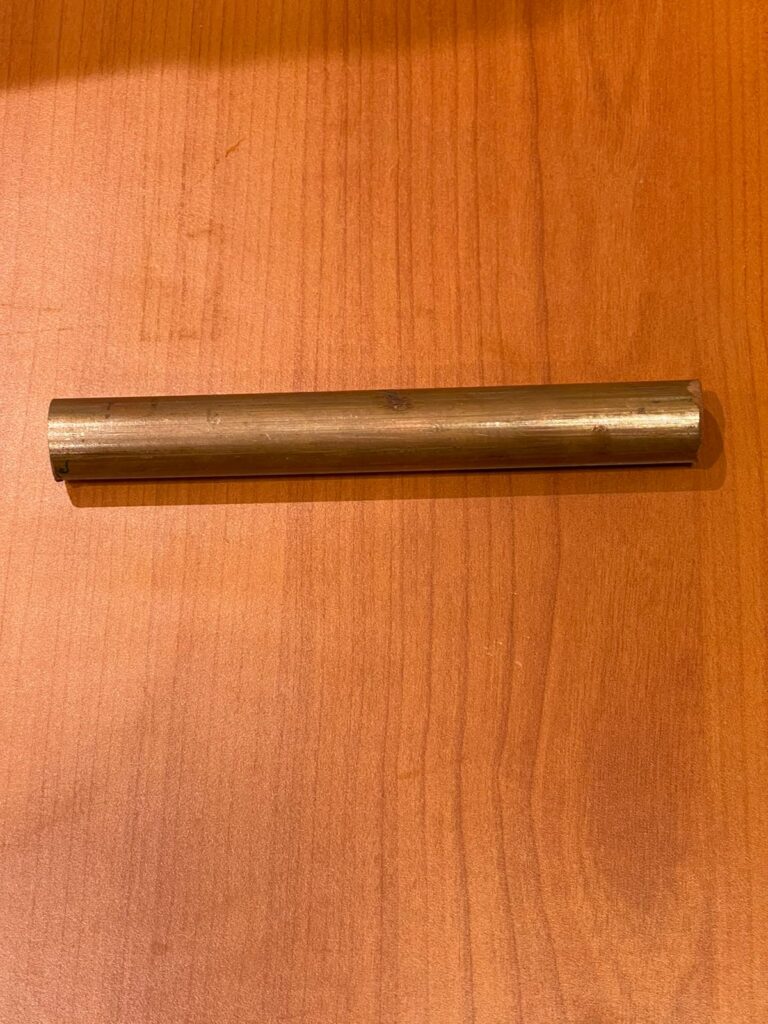
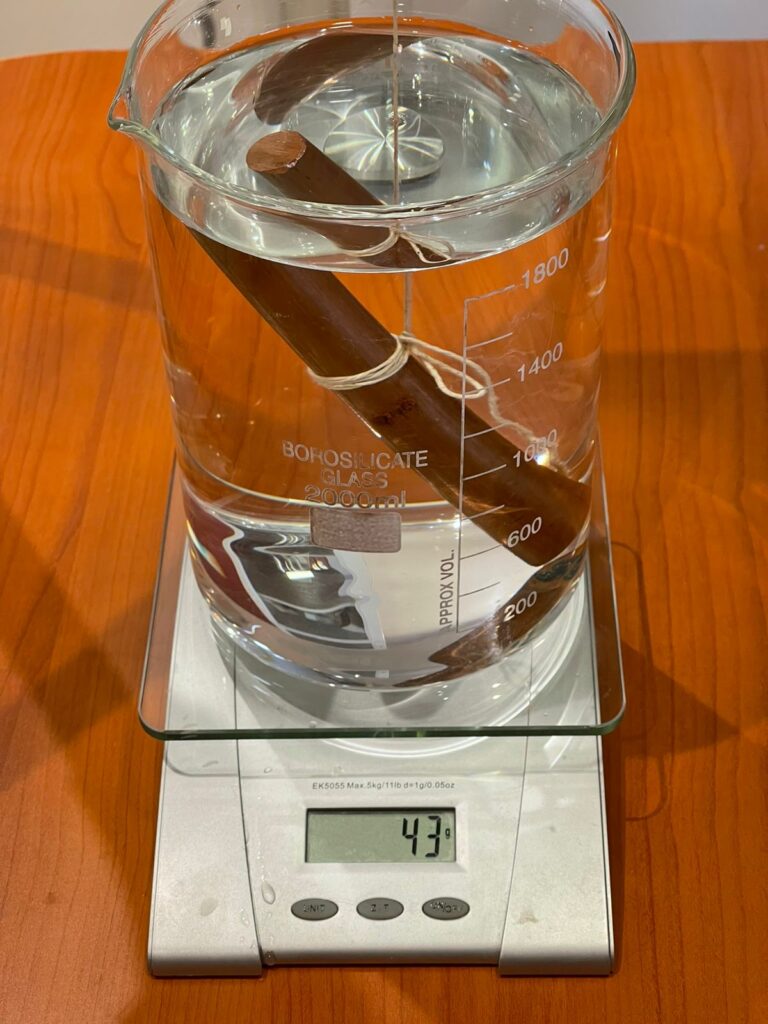
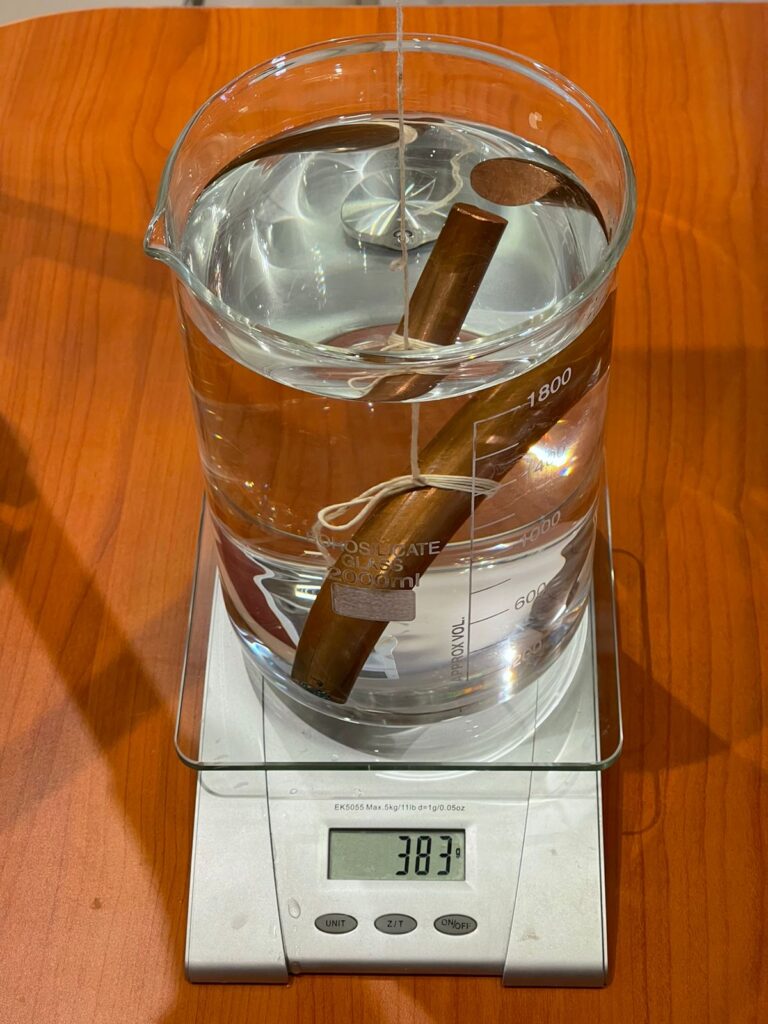
Eddy current interaction of the copper rod with moving magnet
Years ago I collected a Calcite crystal while visiting Elephanta Cave, Mumbai. The way to the cave is lined with many shops selling assortment of things to tourists. Some of them deal with exotic mineral crystals and handicrafts made out of them. I was pretty sure it was Calcite because of it’s Rombohedral crystal structure. The crystal has sufficient transparency to check if it had Bifringent or Double Refraction optical property which Calcite is supposed have. Indeed it has that property. Being Calcium Carbonate it reacted with acid producing gas (Carbon Dioxide). As an additional test I found out it’s density. With a volume of 137 gram and weight of 367 grams, the density worked out to be 367/137=2.68 gram/cc, which is very close to the density of Calcite crystal 2.71gram/cc. It gave the confirmation of it being a real Calcite crystal.
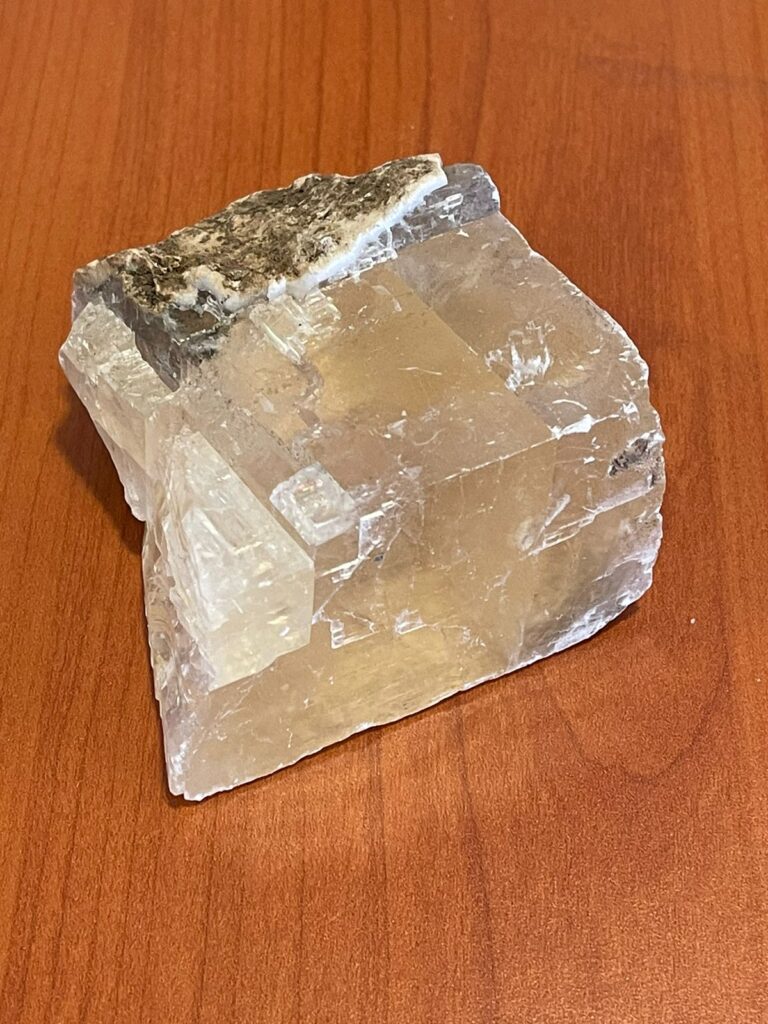
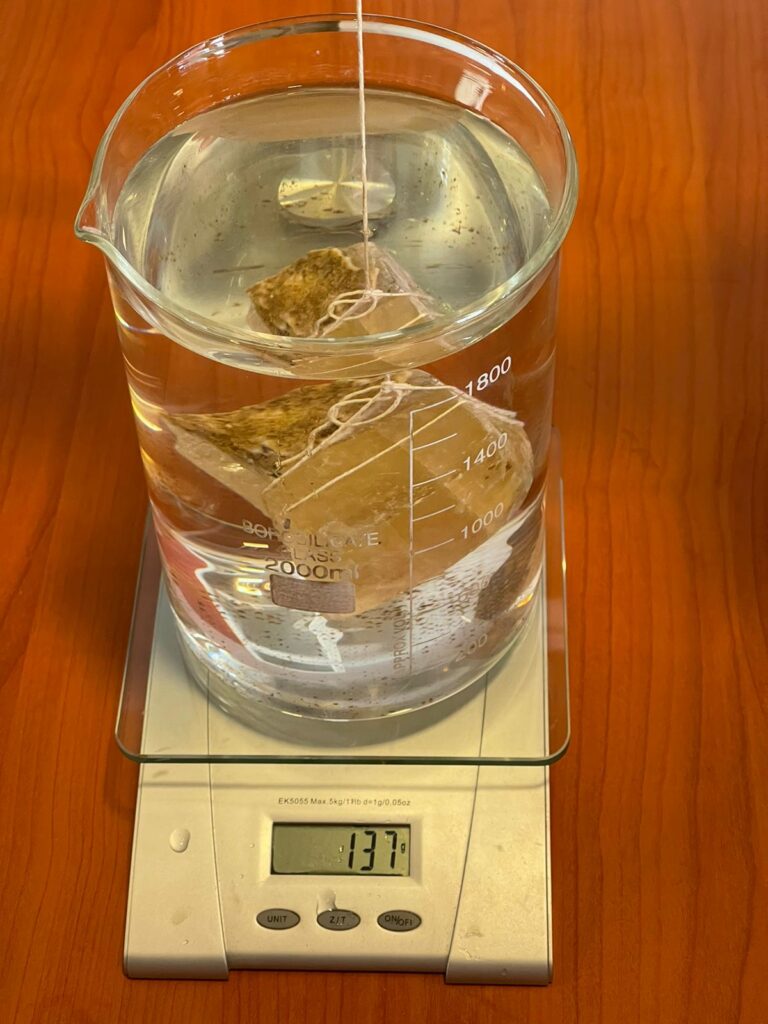
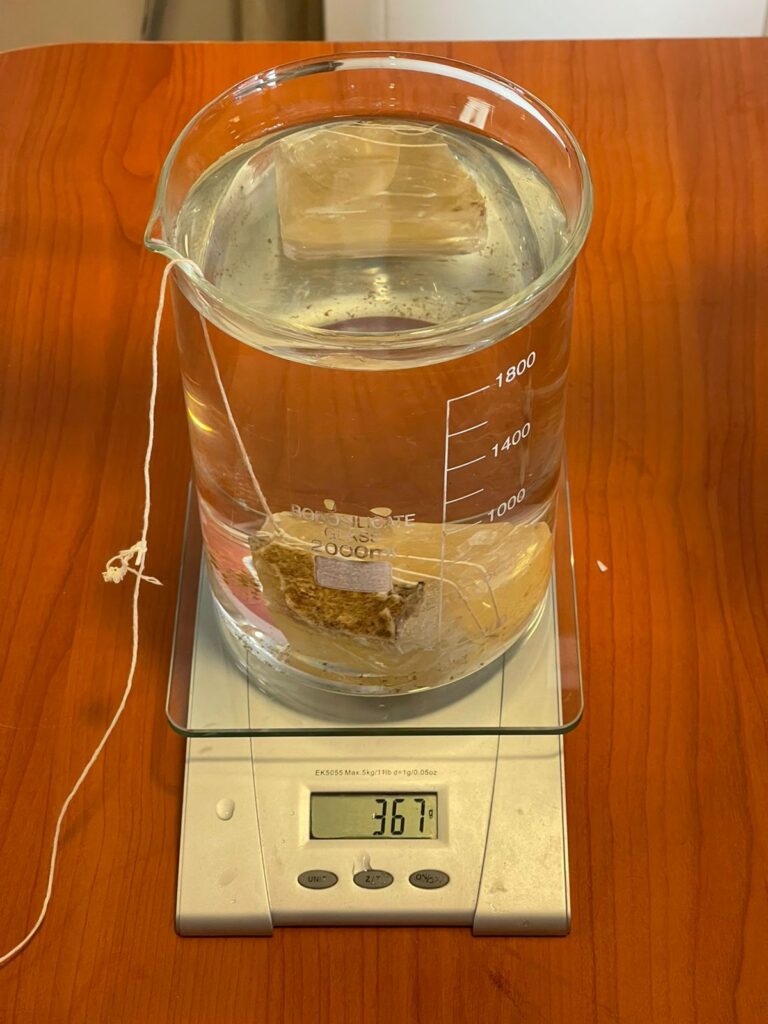
Now I am going do some a quiz. It will be great if you take some efforts to answer in the comments. After sufficient responses are received I am going to explain the right answer.
Quiz questions:
Q.1:
In case the digital weighing scale is out of calibration by say (-)10% of the reading i.e any weight it displays less by 10% of its actual weight. For example 100gm is displayed as 90 gram, 500 gram is displayed as 450 gram, 1000 gram is displayed as 900 gram and so on. In what way it is going to affect the result? Will the result of the density value be:-
- Less by 10%
- More by 10%
- No effect
- Unpredictable
Q.2:
In case we carry out same experiment in laboratory in a place where gravity is less than gravity on earth surface. Say for example we conduct it on the surface of moon where gravity is 1/6th of earth’s gravity on its surface. In what way is it going to affect the result? Will the result of the density value be:-
- Lower
- Higher
- No change
- Cannot be predicted
Q.3:
If we do the experiment by replacing the tap water with sea water. In what way it is going to affect the result? Will the result of the density value be:-
- Lower
- Higher
- No change
- Cannot be predicted
Q.4:
What are the parameters which have to be taken into account to allow highly accurate determination of the density? You can list as many as applicable with brief reason for their inclusion.





1) No effect – because there is 10% decrease in both volume and weight measurement, hence the result will be the same.
2) Result in correct density value- because Mass of an object doesn’t change.
3) it will result in increase in density value- because the volume will be reduced due to higher density of Saline water hence resulting in higher density.
4) Mass and volume of the object is enough for an accurate density measurement.
Thanks. I will post the answers wit explanation after some time
Very interesting one uncle.
Quiz –
1. There will be no effect because as reading difference and the weight of the object both will be 9/10 of the reading and the factor will cancel out
2. It will result in correct density value because of the same reason mentioned above as again there will be reading difference of 1/6 and weight of object will be 1/6 so both will cancel out
3. It will result in high density because the density of sea water is more which will lead to lower volume of object and further it will lead to increase in the density of object because the weight will be same
4. Density of water, object is hollow or not, gravitational force etc
Thanks. I will post the answers wit explanation after some time
It’s so simple and informative appa.. Thanks for sharing your knowledge with us..
Q1. There will be no effect as it will balance each other (volume and weight)
Q2. There will be no change, it will show correct result only as both volume and weight will balance each other’s difference
Q3. The density of saline water will be higher than tap water so it will result in higher volume and when we drop a particle into saline water The weight of the object will get reduced so it will result in less density
Q4. The parameters will be water density, gravity, shape of the object(with hole or some irregularities)
Waiting for your answers and explanations appa..
Thanks
1. It will remain same since both mass and volume recorded is 90% of original.
2. It will remain same Both the readings will become 1/6th
3. Salt water will offer higher buoyant force. volume increases density decreases.
4. Temperature should be considered.
Thanks for sharing such a simple yet intriguing post. My answers for the quiz:
1. No effect: both numerator and denominator would be getting multiplied by the same fraction (0.9), thus canceling its effect
2. No change: same reasoning as above. however, had we be using the actual volume of the object instead of the weight reading as its proxy, then the density reading would have been lower
3. No change, given that we know the density of sea water: as per my understanding sea water has higher density than water, which means that for the same volume (filled up to the same level in the beaker), displaced sea water’s weight reading will be higher (higher density ~ higher mass for a constant vol). in fact it will be higher by the same proportion as the density is and thus the ratio of (displaced liquid weight/density of liquid) will be the same as in the case of water. thus, neither the numerator (weight of object) nor the denominator (volume calculated according to the above mentioned logic) would change, resulting in no change in density reading
4. I can think of the following prerequisites for conducting a successful experiment of determining density using the above stated methodology:
a) Know the density of the liquid being used for immersion since we are using displaced liquid’s weight readings as the proxy for the object’s volume.
b) During the immersion, ensure that no entity other than the object itself, displaces the liquid. That is why there should be no hollow spaces otherwise it will not just be the object but also air displacing the liquid.
c) Immerse the object completely otherwise the displaced liquid would only reflect the partial volume.
d) The object should not touch the beaker’s walls at any times otherwise there would be an additional normal (N) from that surface.
Looking forward to the answers and learning from them 🙂
Eagerly waiting for the answers 🙂
Hi I choose option 3. No effect for the first question
Option 1 lower for the second question
And option 3 no change for the third question
And I don’t know what will be the 4th one 😅
By the way I thought I heard Devyaan’s voice in one of your experiment video
Maybe I don’t know.
Eagerly waiting for the answers 🙂
Sorry for the delay in posting the answer to quiz questions.
Quiz questions:
1. In case the digital weighing scale is out of calibration by say -10% of the reading i.e any weight it displays less by 10% of its actual weight. For example 100gm is displayed as 90 gram, 500 gram is displayed as 450 gram, 1000 gram is displayed as 900 gram and so on. In what way it is going to affect the result? Will it result in a density value be:-
a) Less by 10%
b) More by 10%
c) No effect
d) Unpredictable
Answer:
The digital scale is stated to be out of calibration by -10% of the reading. This means there is no zero error and it indicates 0.9 of the actual weight. In other words the calibration is perfectly linear. Since the volume is being computed from the weight of displaced water, the resultant volume is also affected by a factor of 0.9, in the identical way as the weight of the object. Again the density is computed by dividing the indicated weight of the object and computed volume, both of which are affected by a factor of 0.9, resultant density value will remain unaffected.
So the answer is “c”
It may me noted as long the calibration of the weighing scale is linear, the result of experiment remain unaffected. Any zero error of the scale gets cancelled out as we tare the scale i.e zero the scale at the beginning.
2. In case we carry out same experiment laboratory in a place where gravity is less than that on earth surface. Say for example we conduct it on the surface of moon where gravity is 1/6th earths gravity on its surface. In what way it is going to affect the result? Will it result in a density value be:-
a) It will result in lower density value
b) It will result in higher density value
c) It will result in correct density value
d) Cannot be predicted
Answer:
Weight of any object is the force experienced by it due to gravity, which is product of mass and acceleration due to gravity experienced by it. As both the measurements get reduced by a factor 1/6 compared to those on the earth surface, the resultant density value will remain unaffected.
So the answer is “c”
3. Let us in the experiment by replacing the tap water with sea water. In what way it is going to affect the result? Will it result in a density value be:-
a) It will result in lower density value
b) It will result in higher density value
c) It will result in correct density value
d) Cannot be predicted
Answer:
While carrying out the experiment with tap water we assumed the density to be 1 gram per cc for all practical purposes. But sea water is denser by 2 to 3 percent. So the weight of the displaced volume of water will be higher by 2 to 3 percent. Therefore, unless we consider the correct density the water the resultant computed volume will be lesser by 2 to 3 percent.
So the answer is “a”
The experiment we conducted will result in quite an accurate value of the density of the object for the purpose of identification of the material. However this is based on certain assumption and precautions:
1. The object is heavier that water.
2. The object is not soluble in water. If it is soluble in water, replace water with liquid like kerosene but with known density and density correction to be done.
3. The object is fully solid. In case the object has a hollow space inside by design, the density obtained will be lower. If the volume of hollow space is known, it can be deducted from the computed volume to obtain the correct value of the material.
4. While immersing the object no air is trapped inside or stuck to surface of the object. This will give increased volume measurement.
5. The object is made up of one material. If it is made up of multiple material average density will be obtained. For plated objects the error will be minuscule as the plating thickness is in normally in few microns.
6. The object does not touch the surface of the container.
7. The object is fully immersed and not touching the water surface, else surface tension force may come into play.
8. The thread used to hang the object has negligible dimension, as its volume and weight will add to the measured volume and weight.
9. The object has not been taken out during the experiment. It taken out in between, the water attached to the surface of the body may drip outside and alter the results.
10. The density of water varies with temperature and dissolved contents. It has been assumed to 1 gm per cc. For more accurate result distilled water should be used and density should be corrected for temperature.
11. Although the accuracy of the weighing scale has no effect on the result provided the calibration is linear. More the linearity should more accurate will be result.
12. More the resolution of the scale more accurate will be the result.
13. The table on which experiment is conducted should the stable and should not have movements.
14. Air movements around should be minimum. Air movement due to fan can cause observable weight error.
15. If the object is magnetic or magnetized, nearby magnetic structure will cause weight measurement erroneous.
The list could be bigger. The idea is to be aware of the fact that so many parameters which affect the accuracy of the experimental result in any experiment. More we are aware of these parameters/ condition and better we control the better will be the accuracy of the experimental results.
Please feel free to point out any correction needed if any and also to improve answers.
Eureka !!!
Archimedes would be so proud of this article. An interesting scientific concept explained so lucidly in simple terms.
Jai Ho 😀